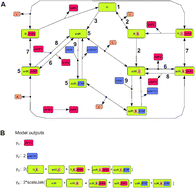Misregulated interleukin-6 (IL-6)-induced Jak/STAT signaling contributes to many diseases. Under non-pathological conditions Jak/STAT signaling is tightly regulated by a complex network of regulators. One of these regulators is the protein tyrosine phosphatase SH2-containing phosphatase 2 (SHP2). Although SHP2 is known to be a negative regulator of IL-6-induced Jak/STAT signaling, its exact molecular function is not entirely understood. To elucidate the function of SHP2 in IL-6 signaling we followed a systems biology approach, in which modeling, stepwise model refinement, and experimental analysis are closely linked. We come up with an identifiable model of early Jak/STAT signaling that describes the data and proves to be predictive. The model-based analysis implies that (1) the stepwise association of IL-6 with gp80 and gp130 and (2) STAT3 dimerization at the receptor are essential for the dynamics of early pathway activation, and (3) phosphorylation of SHP2 is nonlinear. Furthermore, the modeling results indicate that SHP2 does not act as a feedback inhibitor in an early phase of IL-6-induced Jak/STAT signaling. However, experimental data reveal that SHP2 exhibits a basal repressory function.

You have access to this article
 Please wait while we load your content...
Something went wrong. Try again?
Please wait while we load your content...
Something went wrong. Try again?


 Please wait while we load your content...
Please wait while we load your content...